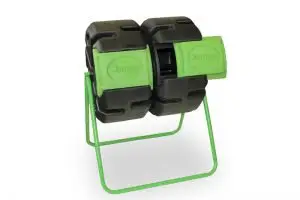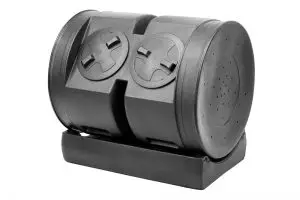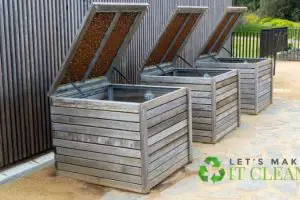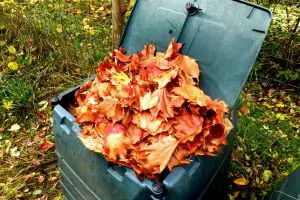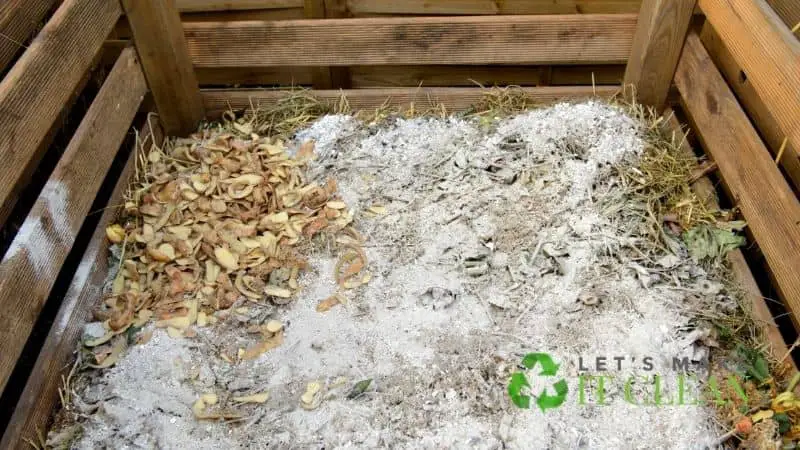Compost worms and earthworms are not the same. They can look similar in color and segmented body, but they have their differences.

For instance, the earthworm has a larger body than the red wiggler. The earthworm burrows underground while the red worm is a surface worm.
Quick Navigation
- Can You Use Any Worms in Your Worm Compost Bin?
- Differences Between Earthworms and Compost Worms
- Similarities Between Earthworms and Red Wiggler Worms
- Can Earthworms Be Used in Vermicomposting?
- Can Earthworms and Red Wigglers Live Together?
- Differences Between Vermicomposting With Worms and Hot Composting
- Are Dew Worms the Same as Earthworms?
- Conclusion
Can You Use Any Worms in Your Worm Compost Bin?
What you need in your compost bin are composting worms. There is a world of difference between compost worms used in compost bins and earthworms.
Worms help to aerate the soil and introducing essential microbes. They also help in speeding up the composting process.
So, which worms are best for composting organic matter in the compost pile or worm bin? And what is their difference?
Differences Between Earthworms and Compost Worms
The general misconception is that compost worms and earthworms are the same.
Well, nothing can be farther from the truth. Composting worms are best for turning your organic waste into useful and nutritious compost for your soil.
On the other hand, earthworms are useful in burrowing and tunneling the soil for aeration.
The most common type of compost worm is the red wiggler (Eisenia fetida), also known as the tiger worm. The red wiggler lives closer to the soil surface. They also prefer wet conditions and they survive by eating rotting organic material such as kitchen scraps, coffee grounds, etc.
Composting worms can only survive in your compost bin if there is enough organic material for them to eat. When they eat the organic material, they digest it and then release worm castings which are excellent in soil conditioning.
Earthworms, on the other hand, garden worms, live underground. They carry organic matter from the surface and take it underground. If you put earthworms in your compost bin, they die due to lack of enough ground to burrow and inadequate food.
Earthworms are reddish-brown and measure between 1/4 to 6 inches long while compost worms are reddish-purple. They measure 2 to 3 inches long.
Similarities Between Earthworms and Red Wiggler Worms
At first, when you look at the two worms, you have challenges determining if you are looking at red wiggler worms or earthworms. For starters, although the colors differ a little, both the red wiggler worms and the earthworms are reddish. They also have a segmented body.
However, you can differentiate them in terms of size as the largest earthworm can be up to 6 inches while the largest red wiggler is 3 inches.
The two types of worms are also similar as they are both hermaphrodites. That means that each worm is both male and female, and they reproduce by joining their clitella.
Additionally, the earthworms and the red wiggler have a central nervous system. The central nervous system consists of ganglia and a peripheral nervous system. They have a closed circulatory system, and they both live in the soil, feeding on dead organic matter.
The two worms species are also popular as they feature a tube-shaped body.
Their main difference comes in what they do. If you are looking for composting with worms, red wiggler worms are an excellent option. Earthworms, on the other hand, are best in burrowing which aerates and drains the soil.
Although they differ in their methods, the two worms species are useful in enhancing the soil quality in the garden.
Can Earthworms Be Used in Vermicomposting?
The best type of worms to use in vermicomposting is the red wigglers (Eisenia fetida).
If you put earthworms in a compost bin for composting purposes, they end up dying. This is due to the lack of enough soil to borrow and not getting enough food.
Can Earthworms and Red Wigglers Live Together?

Earthworms and red wigglers are both essential contributors to the overall health of the soil. With higher soil quality, you can expect better quality plants with higher yields.
But can you have earthworms (nightcrawlers) and red wigglers living together?
You can have nightcrawlers and red wigglers living together though it is not an ideal situation. The two species have different characteristics ad they have adapted to different soil environments, temperatures, the foods they eat, and worm population.
Worms add a lot of value to your garden and compost bin. For instance, a nightcrawler will burrow the soil and carry plant matter underground. This helps to enhance the quality of the soil. It also ensures aeration and makes sure that the soil is not compact, which is good for the plant roots.
Red wigglers on the other side are surface dwellers and don’t go underground. They are better adapted to live in composting bins and compost piles.
The brandling worm is an excellent choice for vermicomposting as they like feeding on decaying plant matter.
If you put them in a composting bin, the worms eat the kitchen waste, and you can also add small quantities of grass clippings. They then produce worm castings rich in nutrients which you can use in your garden, flower beds, and potted plants.
The red wigglers are also popular for use by gardeners as fishing baits.
There are pluses and minuses in keeping the two species of worms together. However, it would be best if you considered differences in their adaptations.
Differences Between Vermicomposting With Worms and Hot Composting

The choice between vermicomposting and hot composting depends on various factors. For instance, if you want a choice that you can use indoors, vermicomposting is the perfect choice as it is ideal for use indoors and outdoors.
Hot composting, on the other hand, can only be done outdoors. You have to turn the compost pile often due to temperature fluctuations. If the temperatures are too high, you can use water to moist the compost.
In a speed comparison, vermicomposting carry the day if you want fast compost. It will take around 2-3 months to have useful compost with vermicomposting while hot composting takes 6-9 months.
You don’t incur any cost with hot composting, but for vermicomposting, you may have to purchase the worms.
Additionally, you can do large bulks of waste with hot composting. However, for vermicomposting, you may be limited as overfeeding the worms can make the compost acidic which can even kill the worms. Red wigglers can eat food equivalent to their body weight in a day.
Are Dew Worms the Same as Earthworms?
Dew worms are a species of earthworms that is active at night and they also crawl during wet weather.
They are useful in maintaining soil fertility and aeration.
Conclusion
If you were lost on whether compost worms are the same as earthworms, this detailed guide gives you all the similarities and differences.
The two species are useful in enhancing soil fertility and aeration. However, they differ in what they eat and in various adaptations. Red wigglers are the best option for vermicomposting.

